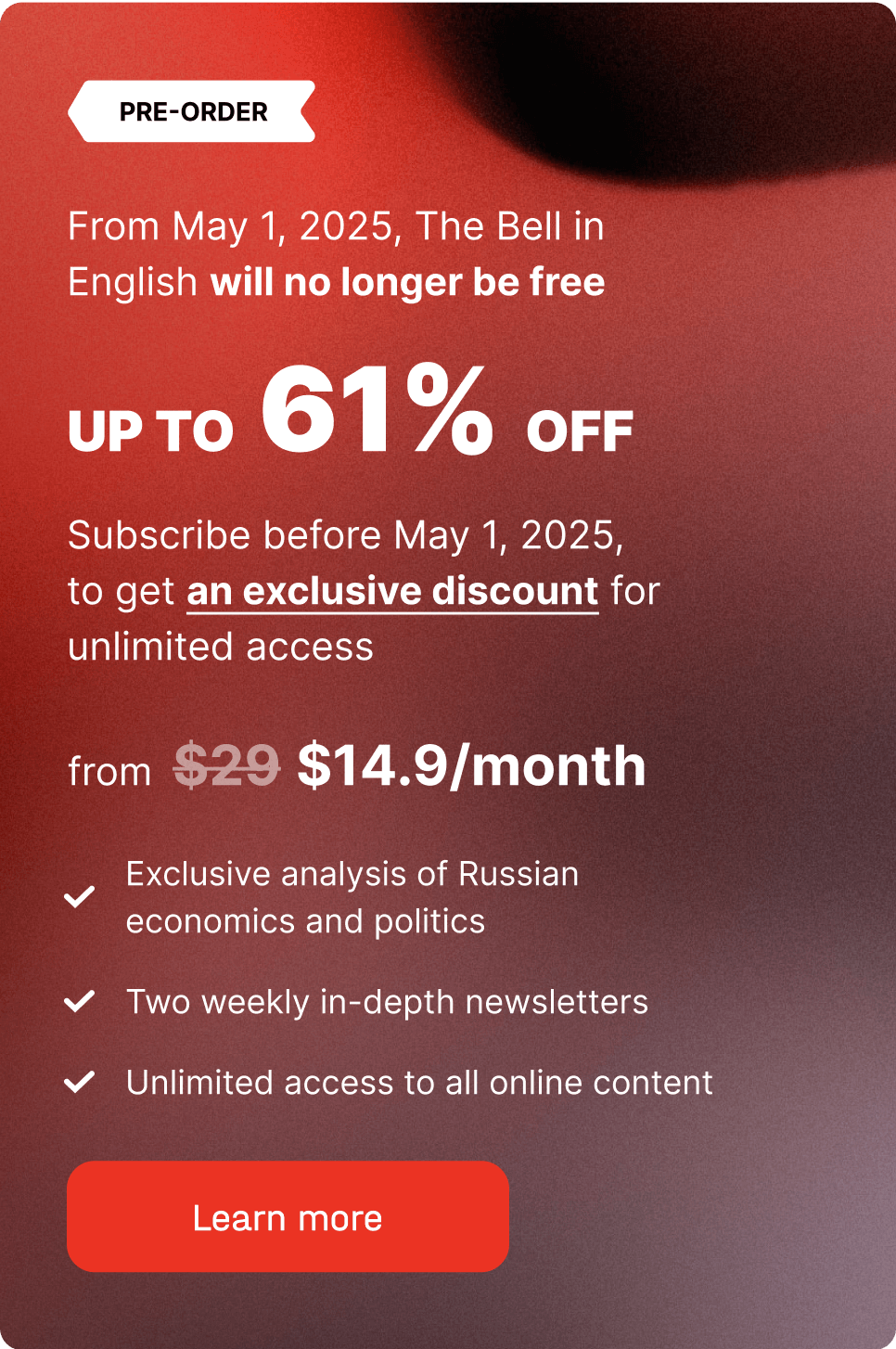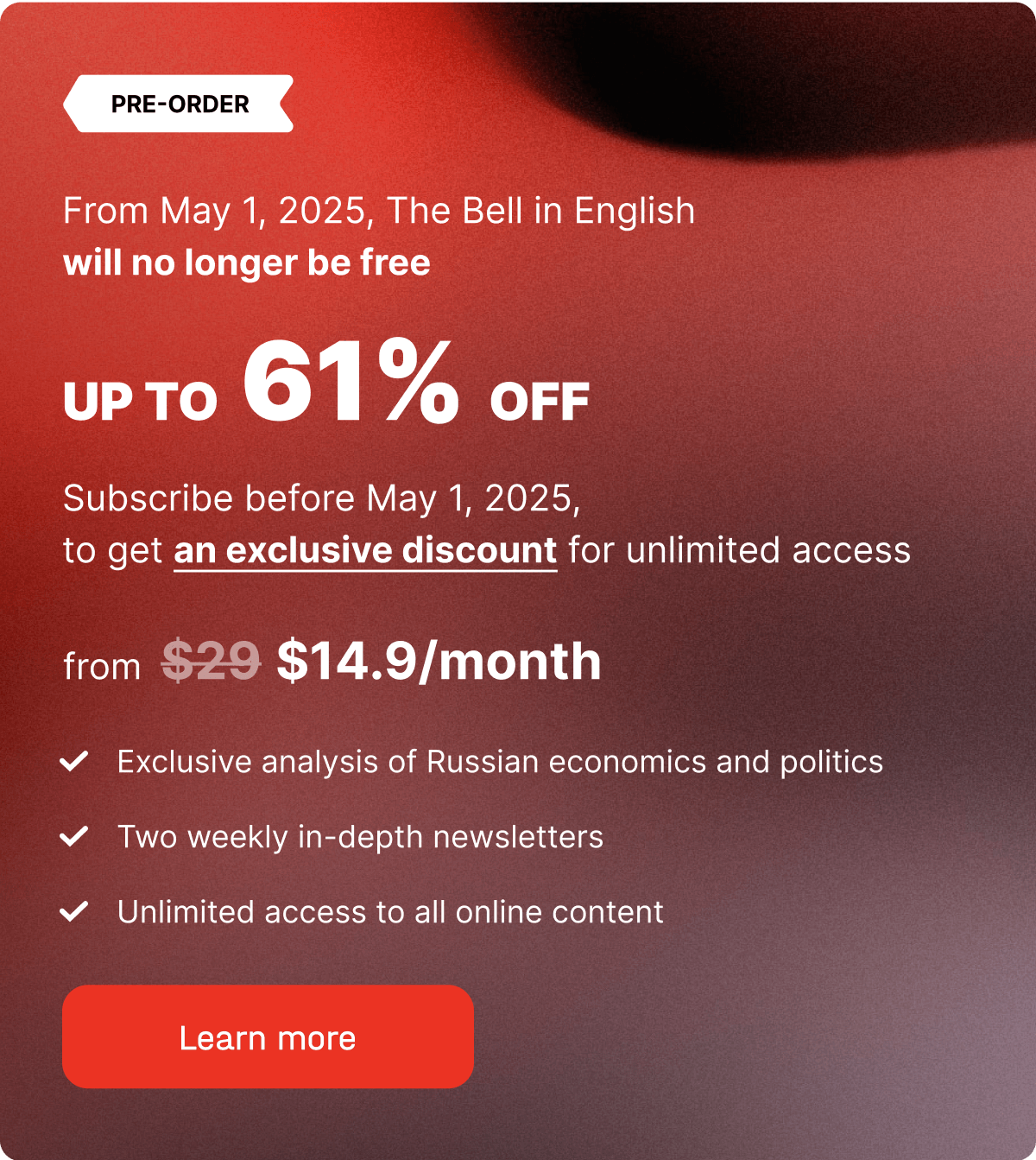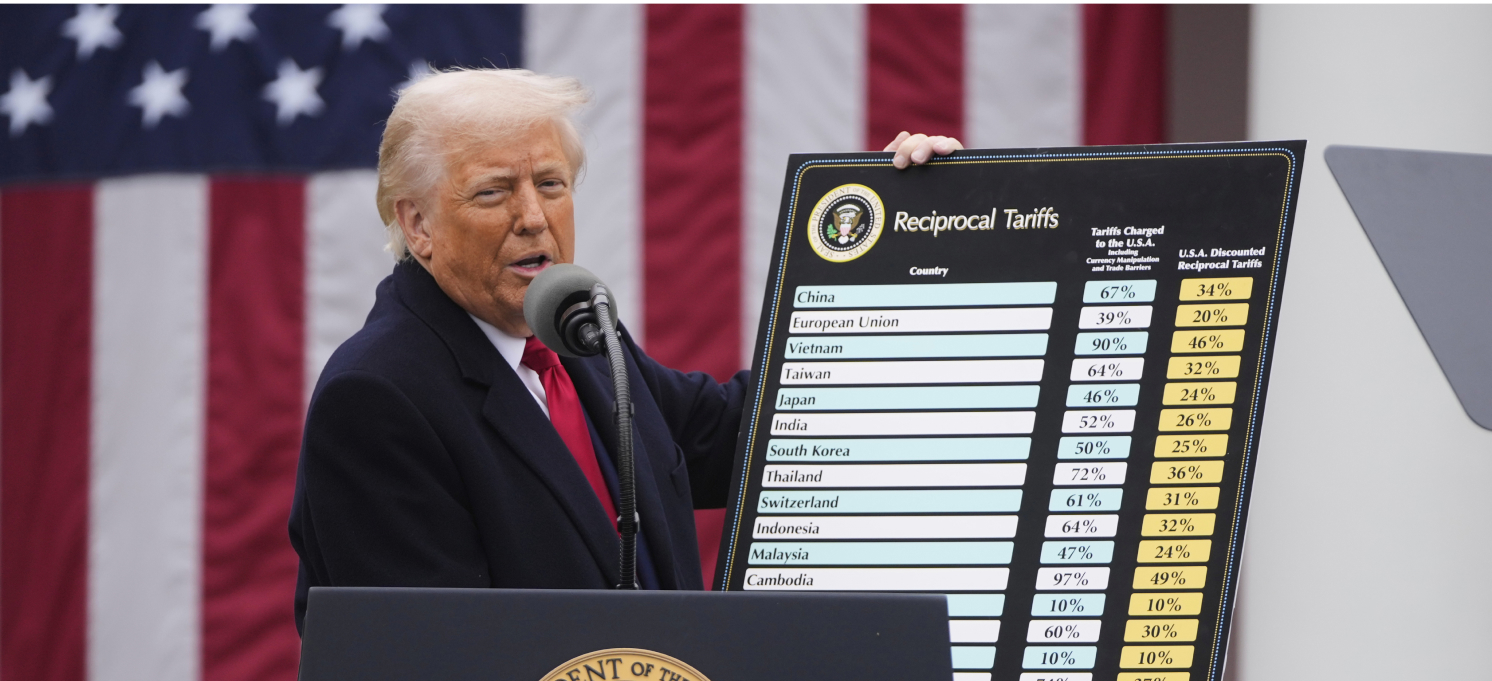
The value of a Russian life
Hello! Welcome to your weekly guide to the Russian economy — written by Denis Kasyanchuk and Alexander Kolyandr and brought to you by The Bell. This time our top story is an analysis of the value of a Russian life – both according to economists, as well as wartime compensation payments. We also look at a wave of asset redistribution that shows no signs of ending.
Calculating the value of a Russian life
“Every human life is priceless,” Russian President Vladimir Putin said in March when discussing Russia’s losses in Ukraine. But that’s not quite true. The families of dead Russian soldiers, for example, are paid 5 million rubles ($55,619). We looked into how this figure was calculated, and how it relates to economic estimations about the value of a human life.
What is the cost of a life?
The idea we cannot place a monetary value on human life is an economic myth. The concept of the “cost of life” has been described in thousands of economic studies, and is taken into consideration by many countries when developing public policy. In practice, though, the value of statistical life (VSL) is used primarily in two areas:
- To calculate compensation to be paid by the government in connection with death or injuries sustained;
- To estimate how much it would cost to avoid these circumstances.
The VSL should not be seen as a hypothetical price for which we can buy or sell lives, or the lives of others. It’s a statistical indicator that shows how much value there is in reducing mortality risks. The more a life is worth, the more the state values its citizens and, accordingly, the more it is willing to invest in boosting life expectancy.
More often than not, the methodologies to calculate VSL are based on people's willingness to pay for a reduced risk of mortality (for example: one, two, three).
How much is a Russian life worth?
There is no single method for calculating the value of a human life. But, as a general rule, the wealthier the country, the more value it places on lives. Irrespective of methodology, the value of a Russian life is several times less than in the U.S. or Europe.
- $1.97 million (Western economist)
Kip Viscusi, from Vanderbilt University, is one of the world’s leading experts in VSL. In one of his studies he developed a method to estimate the value of lives in countries where the necessary statistics were unavailable. Taking the U.S. figure ($9.6 million at 2015 prices) as his base, he calculated the VSL for other countries, adjusting the values for differences in income. It turned out that the average value of a human life in Russia was $1.97 million. That’s under a fifth of the U.S. figure, about a quarter of what it is in Germany, and a little bit higher than in Kazakhstan, Mexico and China.

- 61 million rubles (Russian economists)
The figures calculated by Russian economists tend to be lower than their Western counterparts. In 2018, economists at the Financial University of the Russian Government calculated the country’s VSL based on the population’s satisfaction with their lives, average life expectancy and average household consumption per capita. At 2017 prices, they put the value of a Russian life at between 51 million rubles and 61 million rubles (~$1 million at 2017 exchange rate).
In 2021, economists from RANEPA published a study that calculated the value of life based on an analysis of official figures about salaries and workplace injuries. According to their calculations, a Russian life was worth between 15.8 million rubles and 26.3 million rubles ($243,000-405,000). But these estimates may be understated due to the fact that people have different attitudes to risk: people who are more comfortable with risk are more likely to choose to work in industries where the danger of death or serious injury is greater.
In late 2023, economists at the Russian Academy of Sciences’ Central Institutes of Economics and Mathematics published a study in which they assessed the damage that premature death causes the Russian economy. According to their calculations, the economic impact of one year of life lost to a Russian is up to 513,000 rubles ($8,300). They reckoned the total value of a life in Russia was, therefore, up to 37.5 million rubles at 2021 prices ($576,000).
- 5-8 million rubles (polling)
Surveys about how much people are willing to spend on reducing mortality risks are another way of calculating the value of life. Before the full-scale invasion of Ukraine in 2022, such surveys were regularly carried out in Russia.
In a study undertaken in 2018 by the Financial University, Russians said 5.2 million rubles ($92 400 at 2017 exchange rate) would be fair compensation for loss of life. A 2019 study by Sberbank Life Insurance found that on average, Russians reckoned an average pay-out of 5.8 million rubles (in case of death was fair. The same survey showed this varied widely across the country, with the highest sums suggested in Moscow (8 million rubles) and St. Petersburg (7.2 million). They also found that wealthier the person, the higher the value they put on life.
Money they cannot earn
“People’s ideas about ‘decent’ compensation, as a rule, correlate to what they feel is the reality,” explained Pavel Luzin, a visiting fellow at the Fletcher School at Tufts University in the U.S. and a senior fellow at the Jamestown Foundation. “We’re talking about the money that somebody feels he might earn over 20-25 years, a sum that a man aged 35-45 feels he would never be able to earn again,” he said. “This is the deal the authorities make with these people – they sell their blood in exchange for money that they cannot earn with their labor or their intellect under the current system.”
Using the same logic, geographer Boris Prokhorov has suggested a VSL calculation based on data about earnings and life expectancy. Sociological and statistical studies show people often put a value on their own lives based on earnings. If you follow his methodology, the average value of a Russian life in 2024 can be calculated at 73.5 million rubles ($800,000).

The value of a Russian life in wartime
“We have about 30,000 people dying in road accidents, and roughly the same level of alcohol-related deaths, unfortunately. That’s how life works, it’s complicated and varied. It’s more difficult than what is written on some piece of paper,” Putin said when talking with mothers of Russian soldiers in 2022. Unlike those who died from vodka, their sons lived their lives “with results,” he reassured the mothers.
But what value does the state put on those “results”? If a Russian soldier – mobilized or contract – is killed at the front, his family automatically receives a “presidential” payment of 4.9 million rubles. They are also entitled to insurance (valued at 3.3 million rubles) and a “governor” payout worth up to 3 million rubles.
The maximum compensation for each dead soldier, therefore, is close to 11 million rubles ($130,000). That’s several times higher than, for example, the payments made to relatives of the victims of the Crocus City Hall terrorist attack that took place in March in Moscow (3 million rubles).
However, soldiers who sign-up to fight in Ukraine also receive other significant one-off payouts. At present it's a maximum of 400,000 rubles (although in Moscow you can get 1.9 million rubles). Soldiers also get a monthly salary of about 210,000 rubles.
Why the world should care
The idea that life is beyond monetary value is a good justification for government inaction, a group of academics from Russia's Higher School of Economics pointed out in 2014. It follows that, the lower the compensation payouts to the families of dead Russian soldiers, the less incentive the state has to protect the lives of its citizens.
Russia’s wartime asset redistribution continues apace
It emerged this week that another Western consumer giant was selling its Russian assets at a discount. Meanwhile, a leading auto-trader, nationalized at the end of last year, has reportedly been acquired by a friend of one of Putin’s bodyguards.
- Multinational food and household chemical giant Unilever has got the go-ahead from a government commission to sell its Russian assets, RBC reported Wednesday. Apparently, the deal allowing Unilever to leave the Russian market was agreed at the end of last month. For the sale, the company’s assets (four large production sites as well as brands) have reportedly been valued at a discounted price of about 40 billion rubles. That’s roughly half the company’s valuation of 600 million euros last year.
- The buyer has not yet been named, but newspaper Kommersant reported that it is Alexei Sagal, who has already obtained the assets of several departing Western companies. In the 1990s, Sagal privatized the largest Soviet aerosol manufacturing facility and, by the 2000s, had turned it into a major supplier for Western brands. These connections, plus his friendship with Deputy Prime Minister Denis Manturov, appear to be helping Sagal to buy up foreign assets.
- After the full-scale invasion of Ukraine, Unilever significantly reduced its Russian operations. It stopped importing its goods into Russia, and exporting anything from Russia, as well as imposing a complete halt on investment. However, it continued manufacturing in its Russian factories.
- This week, we also learned the identity of the new owner of car trader Rolf. He is Umar Kremlev, head of the Russian Boxing Federation and the International Boxing Association. Until 2010, Kremlev was known as Umar Lutfulloyev and had two convictions, for extortion in 2004 and assault in 2007. According to an investigation by media outlet Proekt, his subsequent business achievements are the result of his friendship with the head of Putin’s security detail.
- The former owner of Rolf was Sergei Petrov, an opposition politician and former Duma deputy. It was never foreign-owned, but Rolf was nationalized in late 2023 under a process created to deal with foreign companies.
Why the world should care
The sell-off of foreign assets in Russia (usually at huge discounts) is creating a new group of wealthy business owners. These managers are able to acquire these businesses because of their political connections, and are direct beneficiaries of the ongoing war in Ukraine.
Figures of the week
- Russia’s State Statistics Service this week posted a fall in consumer prices for the first time since Feb. 2023. From Aug. 27 to Sep. 2, prices dropped 0.02%. The weekly figure is in line with the average for this week over the past seven years (with the exception of 2022). According to the Economic Development Ministry, food prices were down 0.01%, and regulated, tourist and household services were down 0.69%. At the same time, increases in prices for non-foods slowed to 0.08%. This may be a sign that Russia’s overheating economy is beginning to cool. However, prices for bread, milk, meat and consumer services are still rising.
- Russia’s currency market is again battling a shortage of yuan. The RUSFAR CNY rate, which reflects the cost of attracting and placing Chinese currency on the Moscow Exchange market, was up 3.5 times on Sep. 4, hitting a record of 212% year-on-year. The latest problems began on Aug. 30, when the rate shot up to 42.15%. Typically, it remains below 10% and only reaches double figures during times of short-term yuan deficits. However, since the imposition of Western sanctions on the Moscow Exchange these episodes are more frequent and lead to ever higher rates. State-owned bank Sberbank boss German Gref said Thursday that the Central Bank is working with other banks to overcome the yuan liquidity problem.
- Russians are buying more and more new cars. Sales of new vehicles in August cleared 148,000 cars, a record for the past two years. In the past eight months, sales are up 65.3%, to more than 1 million. It’s likely that the increased demand is linked to the risk of further interest rate rises and the planned increase of a recycling charge from Oct. 1. This could see a new record set in September. As usual, Russian-made Lada cars are the best-selling brand, followed by Chinese cars.
Further reading
Ukraine’s Gamble. The Risks and Rewards of the Offensive Into Russia’s Kursk Region



PAID SUBSCRIPTION LAUNCH
From May 1, 2025, The Bell in English will no longer be free
From May 1, 2025, all The Bell’s newsletters and online content will be behind a paywall. We have taken this decision so that The Bell can remain financially independent, and maintain our high standards of journalism and economic expertise






